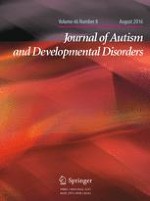18-05-2016 | Brief Report
Brief Report: Simulations Suggest Heterogeneous Category Learning and Generalization in Children with Autism is a Result of Idiosyncratic Perceptual Transformations
Gepubliceerd in: Journal of Autism and Developmental Disorders | Uitgave 8/2016
Log in om toegang te krijgenAbstract
Children with autism spectrum disorder (ASD) sometimes have difficulties learning categories. Past computational work suggests that such deficits may result from atypical representations in cortical maps. Here we use neural networks to show that idiosyncratic transformations of inputs can result in the formation of feature maps that impair category learning for some inputs, but not for other closely related inputs. These simulations suggest that large inter- and intra-individual variations in learning capacities shown by children with ASD across similar categorization tasks may similarly result from idiosyncratic perceptual encoding that is resistant to experience-dependent changes. If so, then both feedback- and exposure-based category learning should lead to heterogeneous, stimulus-dependent deficits in children with ASD.
